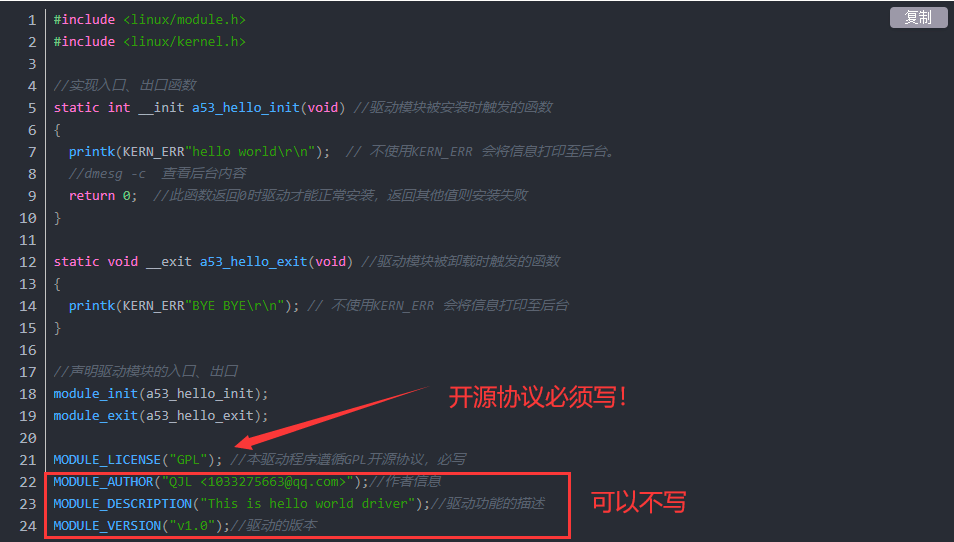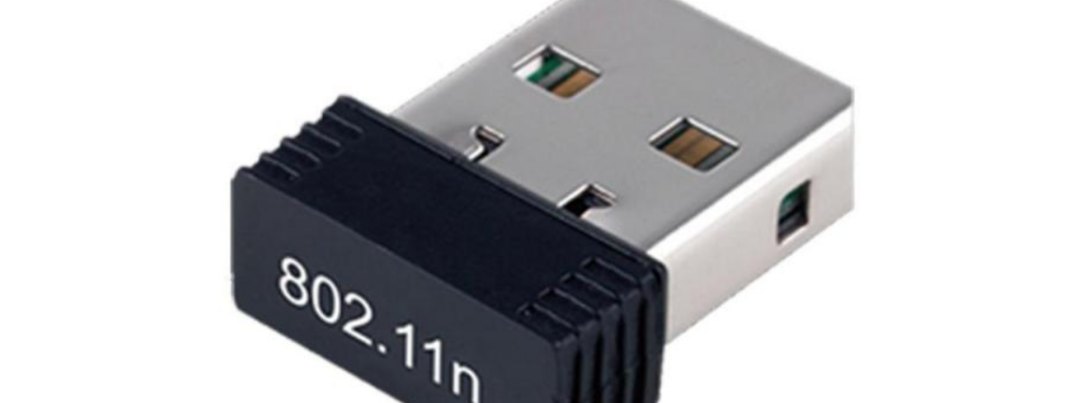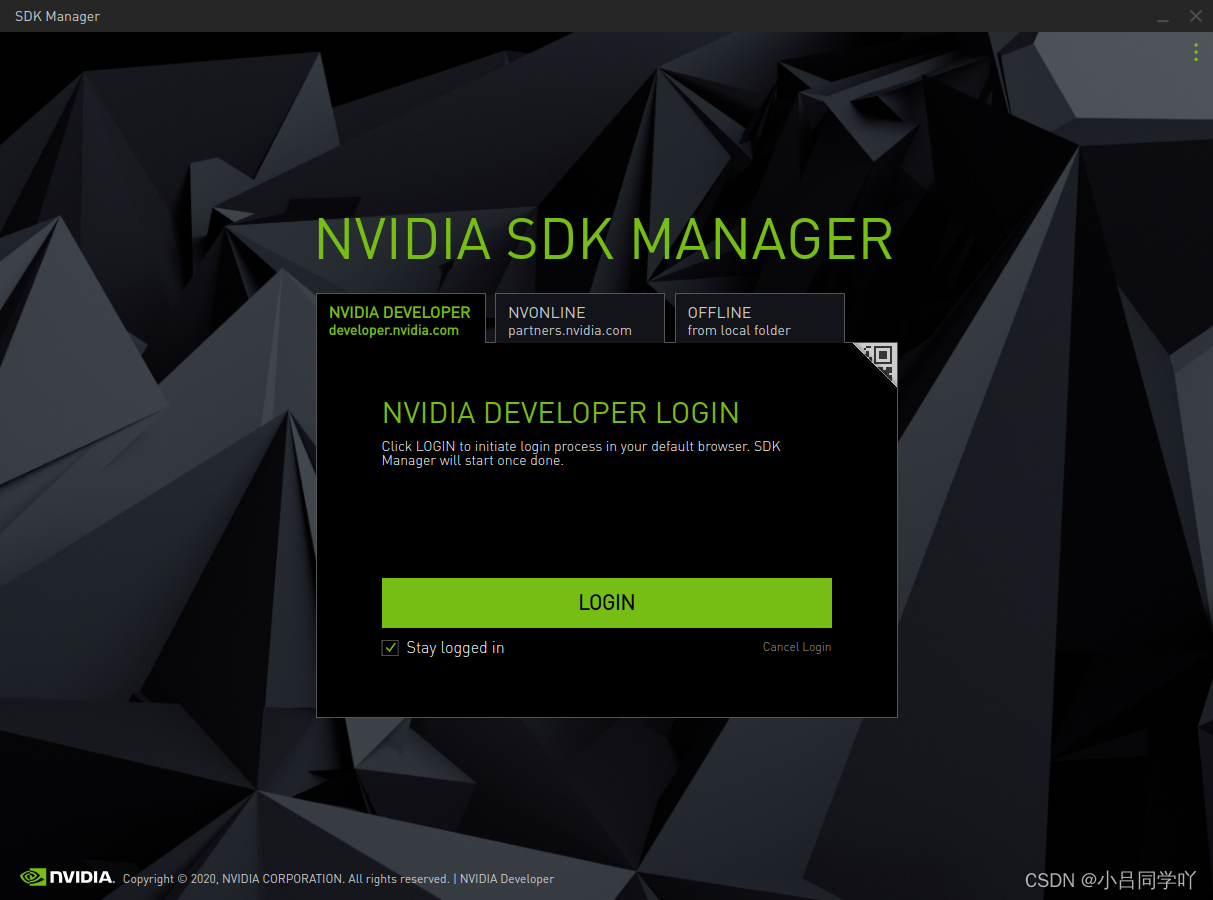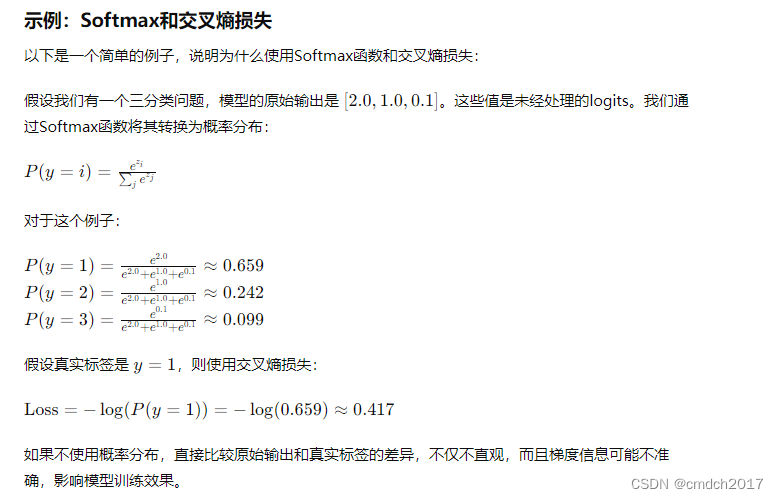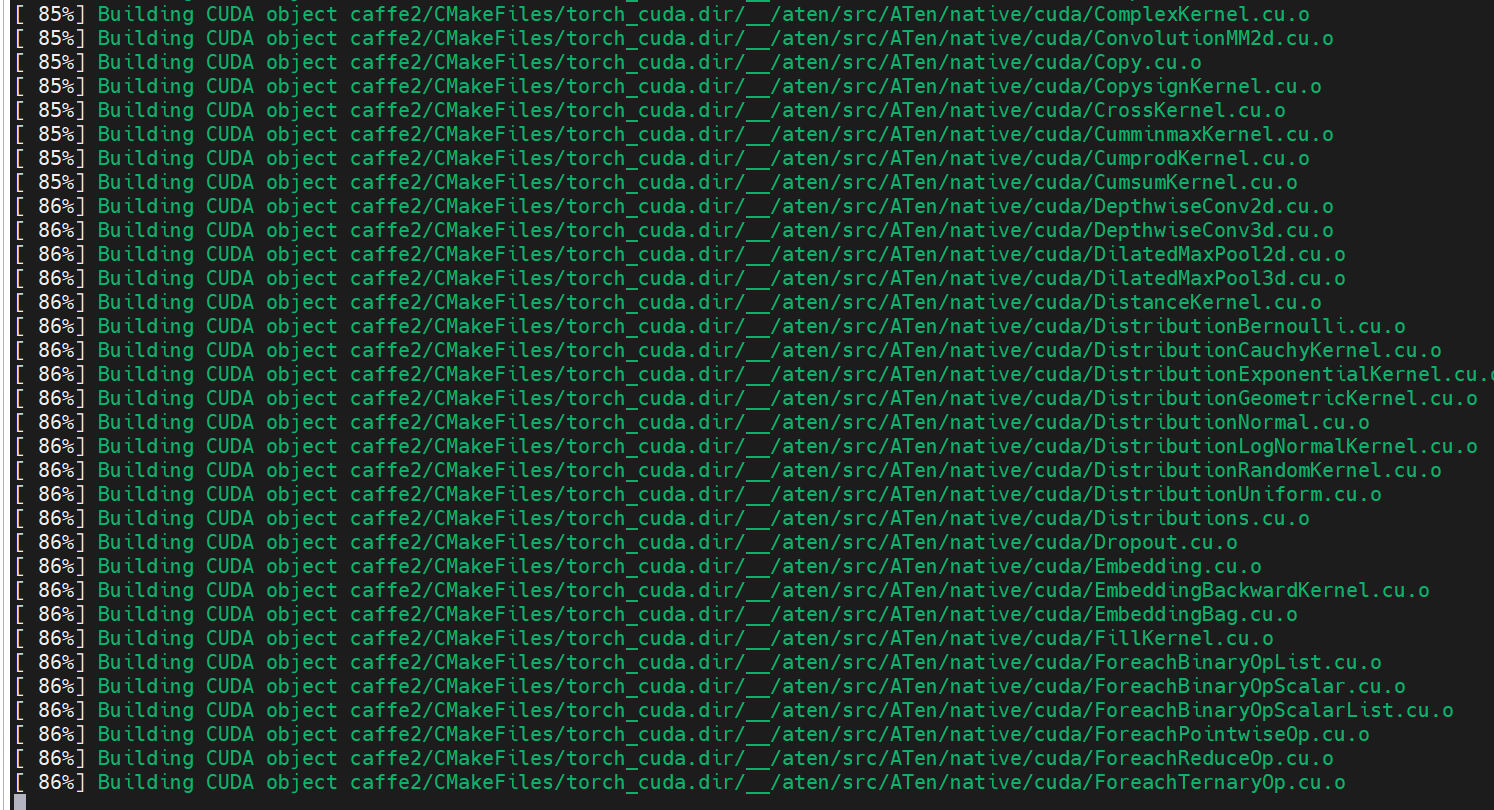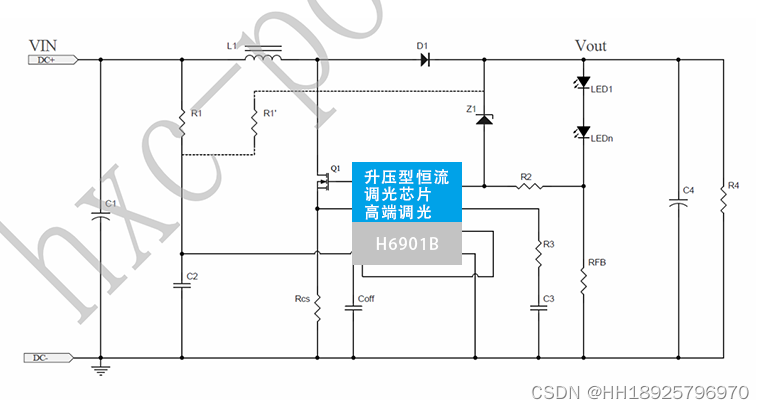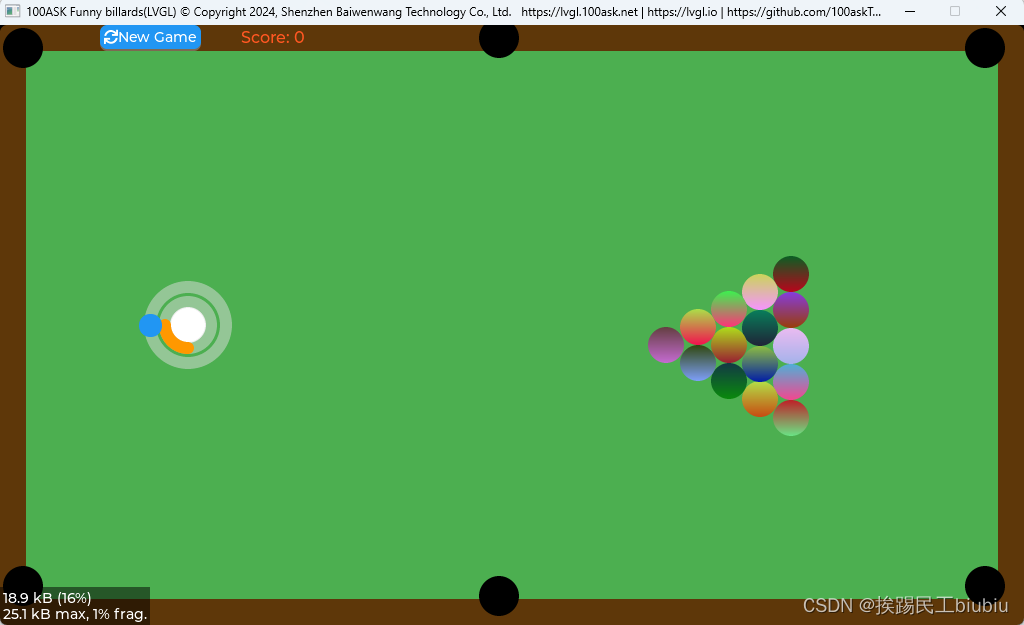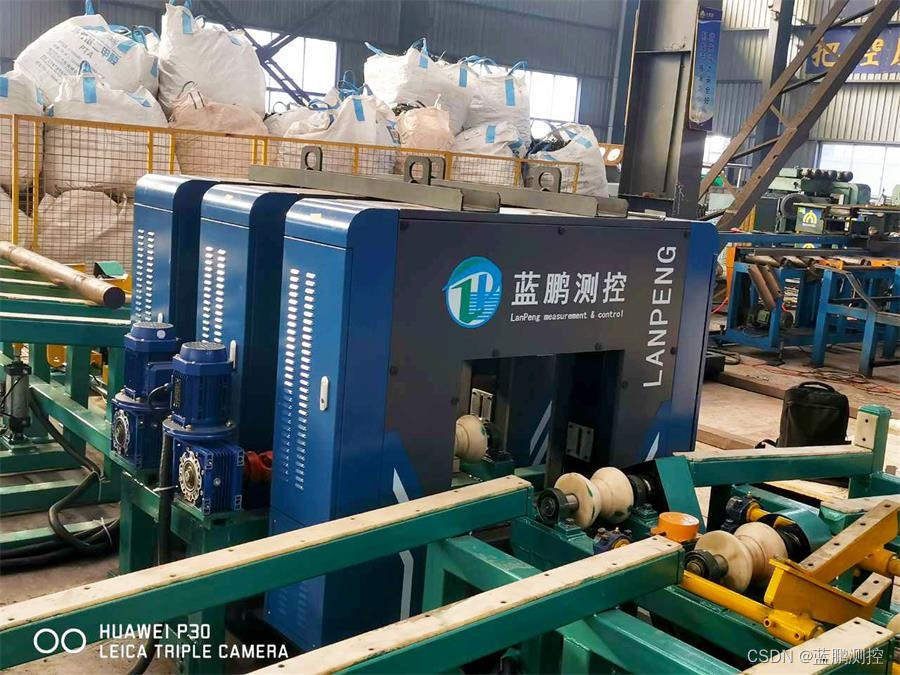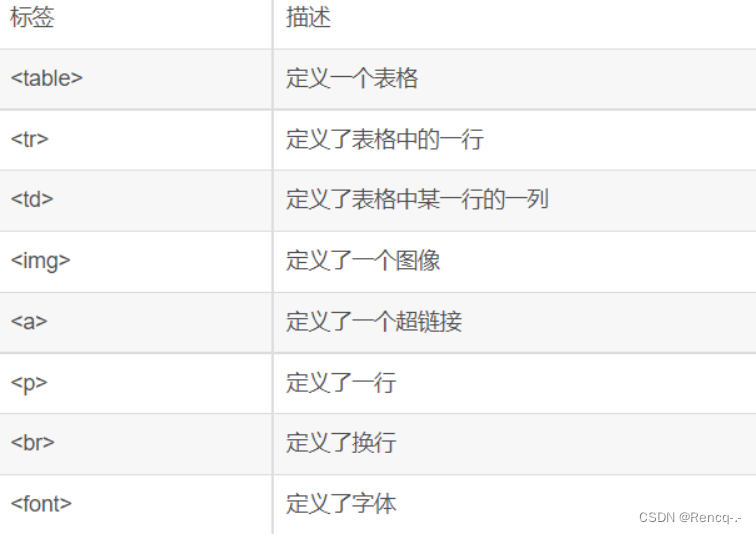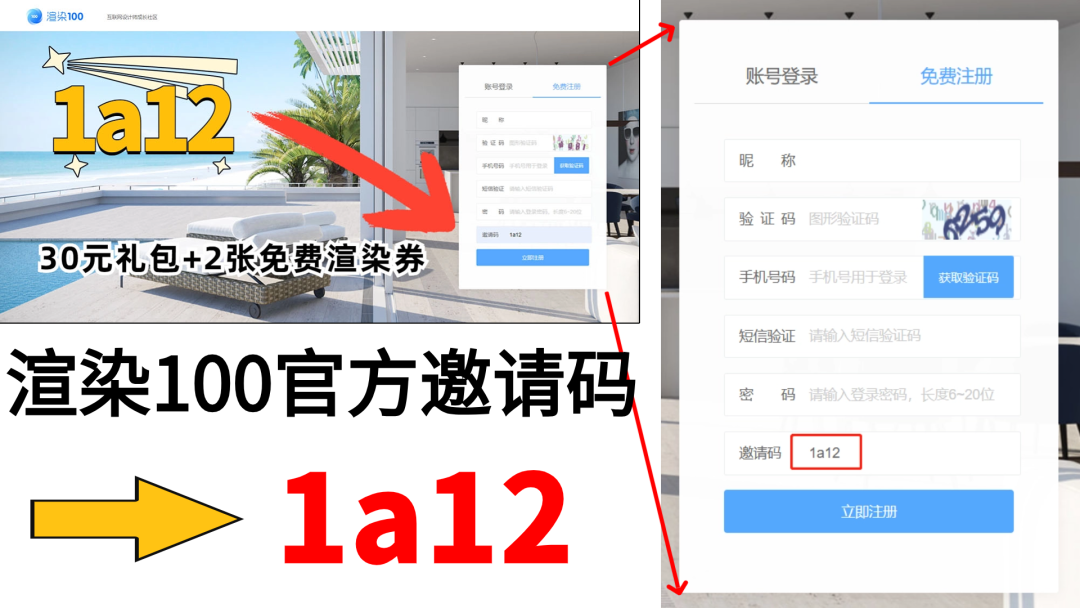一、官方原代码
#!/usr/bin/env python3
#
# Copyright (c) 2020, NVIDIA CORPORATION. All rights reserved.
#
# Permission is hereby granted, free of charge, to any person obtaining a
# copy of this software and associated documentation files (the "Software"),
# to deal in the Software without restriction, including without limitation
# the rights to use, copy, modify, merge, publish, distribute, sublicense,
# and/or sell copies of the Software, and to permit persons to whom the
# Software is furnished to do so, subject to the following conditions:
#
# The above copyright notice and this permission notice shall be included in
# all copies or substantial portions of the Software.
#
# THE SOFTWARE IS PROVIDED "AS IS", WITHOUT WARRANTY OF ANY KIND, EXPRESS OR
# IMPLIED, INCLUDING BUT NOT LIMITED TO THE WARRANTIES OF MERCHANTABILITY,
# FITNESS FOR A PARTICULAR PURPOSE AND NONINFRINGEMENT. IN NO EVENT SHALL
# THE AUTHORS OR COPYRIGHT HOLDERS BE LIABLE FOR ANY CLAIM, DAMAGES OR OTHER
# LIABILITY, WHETHER IN AN ACTION OF CONTRACT, TORT OR OTHERWISE, ARISING
# FROM, OUT OF OR IN CONNECTION WITH THE SOFTWARE OR THE USE OR OTHER
# DEALINGS IN THE SOFTWARE.
#
import sys
import argparse
from jetson_inference import detectNet
from jetson_utils import videoSource, videoOutput, Log
# parse the command line
parser = argparse.ArgumentParser(description="Locate objects in a live camera stream using an object detection DNN.",
formatter_class=argparse.RawTextHelpFormatter,
epilog=detectNet.Usage() + videoSource.Usage() + videoOutput.Usage() + Log.Usage())
parser.add_argument("input", type=str, default="", nargs='?', help="URI of the input stream")
parser.add_argument("output", type=str, default="", nargs='?', help="URI of the output stream")
parser.add_argument("--network", type=str, default="ssd-mobilenet-v2", help="pre-trained model to load (see below for options)")
parser.add_argument("--overlay", type=str, default="box,labels,conf", help="detection overlay flags (e.g. --overlay=box,labels,conf)\nvalid combinations are: 'box', 'labels', 'conf', 'none'")
parser.add_argument("--threshold", type=float, default=0.5, help="minimum detection threshold to use")
try:
args = parser.parse_known_args()[0]
except:
print("")
parser.print_help()
sys.exit(0)
# create video sources and outputs
input = videoSource(args.input, argv=sys.argv)
output = videoOutput(args.output, argv=sys.argv)
# load the object detection network
net = detectNet(args.network, sys.argv, args.threshold)
# note: to hard-code the paths to load a model, the following API can be used:
#
# net = detectNet(model="model/ssd-mobilenet.onnx", labels="model/labels.txt",
# input_blob="input_0", output_cvg="scores", output_bbox="boxes",
# threshold=args.threshold)
# process frames until EOS or the user exits
while True:
# capture the next image
img = input.Capture()
if img is None: # timeout
continue
# detect objects in the image (with overlay)
detections = net.Detect(img, overlay=args.overlay)
# print the detections
print("detected {:d} objects in image".format(len(detections)))
for detection in detections:
print(detection)
# render the image
output.Render(img)
# update the title bar
output.SetStatus("{:s} | Network {:.0f} FPS".format(args.network, net.GetNetworkFPS()))
# print out performance info
net.PrintProfilerTimes()
# exit on input/output EOS
if not input.IsStreaming() or not output.IsStreaming():
break
二、代码解析
这段代码是一个用于实时对象检测的Python脚本,利用NVIDIA的Jetson平台上的Jetson Inference库来实现。以下是对代码的逐步分析:
1. 文件头
#!/usr/bin/env python3
# Copyright (c) 2020, NVIDIA CORPORATION. All rights reserved.
# Permission is hereby granted, free of charge, to any person obtaining a
# copy of this software and associated documentation files (the "Software"),
# to deal in the Software without restriction, including without limitation
# the rights to use, copy, modify, merge, publish, distribute, sublicense,
# and/or sell copies of the Software, and to permit persons to whom the
# Software is furnished to do so, subject to the following conditions:
# ...
这部分是Shebang和版权声明,表明这是一个Python 3脚本,并且对NVIDIA的版权和使用许可进行了说明。
2. 导入模块
import sys
import argparse
from jetson_inference import detectNet
from jetson_utils import videoSource, videoOutput, Log
导入了必要的Python标准库和Jetson Inference相关模块。
3. 命令行参数解析
parser = argparse.ArgumentParser(description="Locate objects in a live camera stream using an object detection DNN.",
formatter_class=argparse.RawTextHelpFormatter,
epilog=detectNet.Usage() + videoSource.Usage() + videoOutput.Usage() + Log.Usage())
parser.add_argument("input", type=str, default="", nargs='?', help="URI of the input stream")
parser.add_argument("output", type=str, default="", nargs='?', help="URI of the output stream")
parser.add_argument("--network", type=str, default="ssd-mobilenet-v2", help="pre-trained model to load (see below for options)")
parser.add_argument("--overlay", type=str, default="box,labels,conf", help="detection overlay flags (e.g. --overlay=box,labels,conf)\nvalid combinations are: 'box', 'labels', 'conf', 'none'")
parser.add_argument("--threshold", type=float, default=0.5, help="minimum detection threshold to use")
try:
args = parser.parse_known_args()[0]
except:
print("")
parser.print_help()
sys.exit(0)
这部分代码解析命令行参数,支持输入和输出流的URI、使用的预训练模型、检测的叠加标志和最低检测阈值。
4. 视频源和输出的创建
input = videoSource(args.input, argv=sys.argv)
output = videoOutput(args.output, argv=sys.argv)
根据解析得到的命令行参数,创建视频输入源和输出对象。
5. 加载对象检测网络
net = detectNet(args.network, sys.argv, args.threshold)
加载指定的预训练对象检测网络,并设置检测阈值。
6. 主处理循环
while True:
# capture the next image
img = input.Capture()
if img is None: # timeout
continue
# detect objects in the image (with overlay)
detections = net.Detect(img, overlay=args.overlay)
# print the detections
print("detected {:d} objects in image".format(len(detections)))
for detection in detections:
print(detection)
# render the image
output.Render(img)
# update the title bar
output.SetStatus("{:s} | Network {:.0f} FPS".format(args.network, net.GetNetworkFPS()))
# print out performance info
net.PrintProfilerTimes()
# exit on input/output EOS
if not input.IsStreaming() or not output.IsStreaming():
break
- 从视频源捕获下一帧图像。
- 使用检测网络检测图像中的对象。
- 打印检测到的对象信息。
- 渲染带有检测叠加的图像到输出流。
- 更新输出窗口的状态栏以显示网络的FPS。
- 打印性能信息。
- 检查输入输出流是否仍在继续,如果任一停止,退出循环。
总结
这段代码实现了一个实时对象检测系统,通过解析命令行参数设定视频输入和输出、加载对象检测模型,并在一个循环中不断捕获图像、检测对象、渲染结果并显示性能信息。该代码适用于NVIDIA Jetson设备,利用Jetson Inference库进行高效的对象检测。
三、代码优化
- 打印目标边界的位置,并在图像上显示
- 目标区域填充改为边界标识
#!/usr/bin/env python3
#
# Copyright (c) 2020, NVIDIA CORPORATION. All rights reserved.
#
# Permission is hereby granted, free of charge, to any person obtaining a
# copy of this software and associated documentation files (the "Software"),
# to deal in the Software without restriction, including without limitation
# the rights to use, copy, modify, merge, publish, distribute, sublicense,
# and/or sell copies of the Software, and to permit persons to whom the
# Software is furnished to do so, subject to the following conditions:
#
# The above copyright notice and this permission notice shall be included in
# all copies or substantial portions of the Software.
#
# THE SOFTWARE IS PROVIDED "AS IS", WITHOUT WARRANTY OF ANY KIND, EXPRESS OR
# IMPLIED, INCLUDING BUT NOT LIMITED TO THE WARRANTIES OF MERCHANTABILITY,
# FITNESS FOR A PARTICULAR PURPOSE AND NONINFRINGEMENT. IN NO EVENT SHALL
# THE AUTHORS OR COPYRIGHT HOLDERS BE LIABLE FOR ANY CLAIM, DAMAGES OR OTHER
# LIABILITY, WHETHER IN AN ACTION OF CONTRACT, TORT OR OTHERWISE, ARISING
# FROM, OUT OF OR IN CONNECTION WITH THE SOFTWARE OR THE USE OR OTHER
# DEALINGS IN THE SOFTWARE.
#
import sys
import argparse
import cv2
import numpy as np
from jetson_inference import detectNet
from jetson_utils import videoSource, videoOutput, Log, cudaToNumpy, cudaFromNumpy
# 解析命令行参数
parser = argparse.ArgumentParser(description="使用目标检测DNN在实时摄像头流中定位目标。",
formatter_class=argparse.RawTextHelpFormatter,
epilog=detectNet.Usage() + videoSource.Usage() + videoOutput.Usage() + Log.Usage())
parser.add_argument("input", type=str, default="", nargs='?', help="输入流的URI")
parser.add_argument("output", type=str, default="", nargs='?', help="输出流的URI")
parser.add_argument("--network", type=str, default="ssd-mobilenet-v2", help="要加载的预训练模型(见下文选项)")
parser.add_argument("--overlay", type=str, default="box,labels,conf", help="检测叠加标志(例如 --overlay=box,labels,conf)\n有效组合有: 'box', 'labels', 'conf', 'none'")
parser.add_argument("--threshold", type=float, default=0.5, help="使用的最小检测阈值")
try:
args = parser.parse_known_args()[0]
except:
print("")
parser.print_help()
sys.exit(0)
# 创建视频源和输出
input = videoSource(args.input, argv=sys.argv)
output = videoOutput(args.output, argv=sys.argv)
# 加载目标检测网络
net = detectNet(args.network, sys.argv, args.threshold)
# 注意:要硬编码路径以加载模型,可以使用以下API:
#
# net = detectNet(model="model/ssd-mobilenet.onnx", labels="model/labels.txt",
# input_blob="input_0", output_cvg="scores", output_bbox="boxes",
# threshold=args.threshold)
# 处理帧,直到EOS或用户退出
while True:
# 捕获下一张图像
img = input.Capture()
if img is None: # 超时
continue
# 在图像中检测目标(无叠加)
detections = net.Detect(img, overlay='none')
# 打印检测结果
print("在图像中检测到 {:d} 个目标".format(len(detections)))
# 将CUDA图像转换为NumPy数组以便OpenCV处理
np_img = cudaToNumpy(img)
for idx, detection in enumerate(detections):
print(detection)
# 打印检测目标的坐标
print(f"目标 {idx}: 左={detection.Left}, 上={detection.Top}, 右={detection.Right}, 下={detection.Bottom}")
# 使用OpenCV在图像上绘制红色边框
color = (255, 0, 0) # BGR格式,红色
cv2.rectangle(np_img, (int(detection.Left), int(detection.Top)), (int(detection.Right), int(detection.Bottom)), color, 2)
# 使用OpenCV在图像上绘制坐标
coordinates_text = f"({int(detection.Left)}, {int(detection.Top)}), ({int(detection.Right)}, {int(detection.Bottom)})"
cv2.putText(np_img, coordinates_text, (int(detection.Left), int(detection.Top) - 10), cv2.FONT_HERSHEY_SIMPLEX, 0.5, (255, 255, 255), 1, cv2.LINE_AA)
# 将修改后的NumPy数组转换回CUDA图像
cuda_img = cudaFromNumpy(np_img)
# 渲染图像
output.Render(cuda_img)
# 更新标题栏
output.SetStatus("{:s} | 网络 {:.0f} FPS".format(args.network, net.GetNetworkFPS()))
# 打印性能信息
net.PrintProfilerTimes()
# 输入/输出EOS时退出
if not input.IsStreaming() or not output.IsStreaming():
break
原代码的效果
打印边界并增加红框的效果

去掉填充的效果
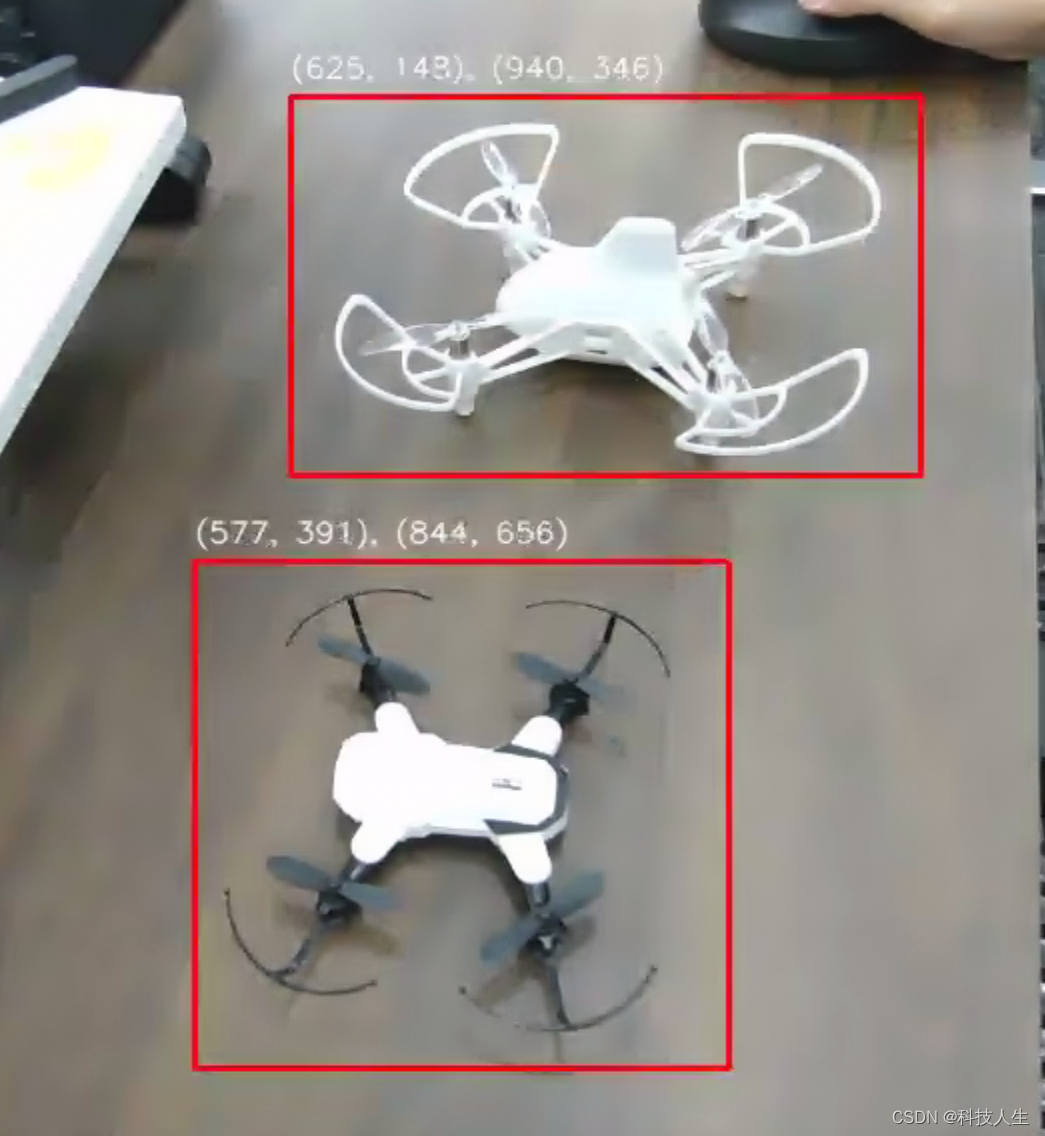
优化说明:
img 和 np_img 是代表不同图像格式的数据结构,主要区别在于存储方式和使用的库:
-
img:- 类型:这是一个CUDA图像,通常是通过Jetson平台上的
jetson_utils库进行处理和存储的图像数据。 - 存储:图像数据存储在GPU(CUDA内存)中,适合高效的并行计算和图像处理。
- 用途:
img通常在Jetson平台上用于高性能实时处理,如目标检测、视频流处理等,因为它可以直接在GPU上操作数据。 - 库:由
jetson_utils库管理,提供了一些CUDA专用的函数进行操作。
- 类型:这是一个CUDA图像,通常是通过Jetson平台上的
-
np_img:- 类型:这是一个NumPy数组,代表了图像数据在CPU内存中的形式。
- 存储:图像数据存储在CPU内存中,便于使用Python中的NumPy库和OpenCV库进行各种图像处理和分析。
- 用途:
np_img通常用于需要灵活和广泛支持的图像处理任务,如使用OpenCV进行图像绘制、特征提取等。 - 库:主要由NumPy和OpenCV库管理,用于各种图像处理和计算任务。
具体区别和相互转换
在您的代码中,img 是通过Jetson平台上的视频源(如摄像头或视频文件)捕获的CUDA图像。为了在图像上绘制检测结果,需要将CUDA图像转换为NumPy数组形式,以便使用OpenCV绘制文本。
- 转换过程:
cudaToNumpy(img):将CUDA图像img转换为NumPy数组np_img。这样可以使用OpenCV在图像上绘制文本。cudaFromNumpy(np_img):将修改后的NumPy数组np_img转换回CUDA图像,便于Jetson平台上的后续处理和显示。
代码示例
以下是对两个图像格式的具体操作:
# Capture the next image from the video source (CUDA image)
img = input.Capture()
# Convert the CUDA image to a NumPy array for OpenCV processing
np_img = cudaToNumpy(img)
# Use OpenCV to draw text on the NumPy image
coordinates_text = f"({int(detection.Left)}, {int(detection.Top)}), ({int(detection.Right)}, {int(detection.Bottom)})"
cv2.putText(np_img, coordinates_text, (int(detection.Left), int(detection.Top) - 10), cv2.FONT_HERSHEY_SIMPLEX, 0.5, (255, 255, 255), 1, cv2.LINE_AA)
# Convert the modified NumPy array back to a CUDA image
cuda_img = cudaFromNumpy(np_img)
# Render the CUDA image
output.Render(cuda_img)
总结
img是在GPU内存中的CUDA图像,适用于高性能并行计算。np_img是在CPU内存中的NumPy数组,便于灵活的图像处理和分析。- 通过
cudaToNumpy和cudaFromNumpy进行相互转换,可以在GPU和CPU之间高效处理图像数据。
这种转换使得您可以充分利用GPU的计算能力和CPU的灵活处理能力,进行复杂的图像处理任务。
四、detectNet库解析
detectNet的属性和方法
detectNet 类是 NVIDIA Jetson 上的一个库,用于进行目标检测。这个类提供了加载模型、处理图像、检测目标以及获取检测结果的功能。以下是 detectNet 类的主要属性和方法:
主要属性
- net:
- 说明:检测网络的核心对象。
主要方法
-
__init__:- 说明:初始化
detectNet对象。 - 参数:
network:要加载的预训练模型的名称或路径。threshold:用于检测的最小置信度阈值。overlay:检测叠加标志(例如:‘box,labels,conf’)。argv:命令行参数。
- 说明:初始化
-
Detect:- 说明:在给定图像上进行目标检测。
- 参数:
image:输入的图像。overlay:检测叠加标志。
- 返回:一个
Detection对象列表,包含检测到的目标信息。
-
GetNetworkFPS:- 说明:获取网络的帧率。
- 返回:网络的帧率(FPS)。
-
GetClassDesc:- 说明:获取类别ID对应的描述(名称)。
- 参数:
class_id:类别ID。
- 返回:类别的描述(名称)。
-
GetClassPath:- 说明:获取类别ID对应的路径(标签文件中的路径)。
- 参数:
class_id:类别ID。
- 返回:类别的路径。
-
PrintProfilerTimes:- 说明:打印网络的性能数据。
-
Usage:- 说明:返回一个描述
detectNet使用方法的字符串。 - 返回:一个字符串,描述如何使用
detectNet。
- 说明:返回一个描述
Detection 对象
Detection 对象表示检测结果,包含以下属性:
-
Confidence:
- 说明:检测到目标的置信度。
- 类型:浮点数。
-
ClassID:
- 说明:检测到目标的类别ID。
- 类型:整数。
-
Left:
- 说明:目标边界框的左边界坐标。
- 类型:浮点数。
-
Top:
- 说明:目标边界框的上边界坐标。
- 类型:浮点数。
-
Right:
- 说明:目标边界框的右边界坐标。
- 类型:浮点数。
-
Bottom:
- 说明:目标边界框的下边界坐标。
- 类型:浮点数。
-
Width:
- 说明:目标边界框的宽度。
- 类型:浮点数。
-
Height:
- 说明:目标边界框的高度。
- 类型:浮点数。
-
Area:
- 说明:目标边界框的面积。
- 类型:浮点数。
-
Center:
- 说明:目标边界框的中心点坐标,格式为 (x, y)。
- 类型:浮点数元组。
示例代码
以下是如何使用 detectNet 类的示例:
from jetson_inference import detectNet
from jetson_utils import videoSource, videoOutput, cudaToNumpy
# 初始化detectNet对象
net = detectNet(network="ssd-mobilenet-v2", threshold=0.5)
# 创建视频源和输出
input = videoSource("csi://0") # 从摄像头读取
output = videoOutput("display://0") # 输出到显示器
while True:
# 捕获下一帧
img = input.Capture()
if img is None: # 超时
continue
# 在图像上检测目标
detections = net.Detect(img)
# 打印检测结果
print("检测到 {:d} 个目标".format(len(detections)))
for detection in detections:
print(f"置信度: {detection.Confidence}")
print(f"类别ID: {detection.ClassID}")
print(f"左: {detection.Left}, 上: {detection.Top}, 右: {detection.Right}, 下: {detection.Bottom}")
print(f"宽度: {detection.Width}, 高度: {detection.Height}")
print(f"面积: {detection.Area}")
print(f"中心: {detection.Center}")
# 渲染图像
output.Render(img)
# 更新标题栏
output.SetStatus("Network {:.0f} FPS".format(net.GetNetworkFPS()))
# 打印性能信息
net.PrintProfilerTimes()
# 输入/输出EOS时退出
if not input.IsStreaming() or not output.IsStreaming():
break
通过这些方法和属性,detectNet 类提供了在 Jetson 平台上进行实时目标检测的强大功能。
总结
detectNet 是一个强大的目标检测工具,提供了便捷的方法来加载预训练模型、处理图像并获取检测结果。通过 Detection 对象,用户可以方便地访问每个检测到的目标的详细信息。这些功能使得 detectNet 非常适合在 Jetson 平台上进行实时目标检测应用。
detection的属性
在 detectNet 的 Detection 对象中,除了 Left 和 Top 之外,还有其他几个属性。这些属性包括目标的边界框坐标、尺寸、置信度、类别ID等。以下是所有属性的列表和说明:
-
Confidence:
- 说明:检测到目标的置信度值,表示模型对检测结果的信心程度。
- 类型:浮点数,范围为0到1。
-
ClassID:
- 说明:检测到目标的类别ID,对应于模型标签文件中的类别。
- 类型:整数。
-
Left:
- 说明:目标边界框的左边界坐标。
- 类型:浮点数。
-
Top:
- 说明:目标边界框的上边界坐标。
- 类型:浮点数。
-
Right:
- 说明:目标边界框的右边界坐标。
- 类型:浮点数。
-
Bottom:
- 说明:目标边界框的下边界坐标。
- 类型:浮点数。
-
Width:
- 说明:目标边界框的宽度。
- 类型:浮点数。
-
Height:
- 说明:目标边界框的高度。
- 类型:浮点数。
-
Area:
- 说明:目标边界框的面积。
- 类型:浮点数。
-
Center:
- 说明:目标边界框的中心点坐标,格式为 (x, y)。
- 类型:浮点数元组。
下面是一个示例输出,展示了这些属性:
detected 1 objects in image
<detectNet.Detection object>
-- Confidence: 0.992188
-- ClassID: 1
-- Left: 186.562
-- Top: 416.953
-- Right: 390.625
-- Bottom: 550.547
-- Width: 204.062
-- Height: 133.594
-- Area: 27261.5
-- Center: (288.594, 483.75)
Object 0: Left=186.5625, Top=416.953125, Right=390.625, Bottom=550.546875
这些属性提供了关于检测到的每个目标的详细信息,包括其位置、尺寸、置信度和类别。这些信息可以用于进一步处理和分析,例如绘制边界框、计算目标之间的距离或进行分类统计等。

